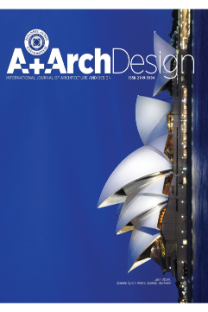Analyzing Preschool Education Models in Architectural Design
Analyzing Preschool Education Models in Architectural Design
ABSTRACT: Preschool period is a critical period in which the child develops very quickly and their learning potential gets higher. Since it is a critical period, it has great effects in the life of the child and should be evaluated well. In the first part of this research, information about the basic needs of the pre-school education environment is given. In the second part, different education models around the world are examined. And lastly, the study concludes the analysis of the different kindergarten that provides education.
Keywords:
Pre-school Education, Educational Environment, Alternative Education Architectural Design,
___
- REFERENCES Agustin Escolano. (2003). The School in the City: School Architecture as Discourse and as Text.
- Benito.University of Vallodalid , Spain Paedagogica Historica, Volume 39 no: ½ .
- ASTLEY, K.; JACKSON, P., (2000), “Doubts on Spirituality: Interpreting Waldorf Ritual International Journal of Children’s Spirituality”, 5 (2), s.221-227
- Butin, D. (2000). Early Childhood Centers. National Clearinghouse for Educational Facilities. 7 Ekim 2011 tarihinde http://files.eric.ed.gov/fulltext/ED446422.pdf sayfasından erişilmiştir.
- Bika, A. (1996). Defining Elements in the Planing of Early Childhood (Clasrooms) as Parameters in the Development and Education of the Child. 6 th Europen Conference on the Quality of Early
- Childhood Education. September. 1-4. 5 Ağustos 2012 tarihinde
- BİLALOĞLU, R.G., (2004), “Okul Öncesi Eğitimde High/Scope Yaklaşımı”, Çukurova Üniversitesi Sosyal Bilimler Enstitüsü Dergisi, 13(2), s.41-56.
- Children. Educational Leadership / September Crow İsland School. Winnetka. 69-70
- Cevher, Kalburan, N. (2011). Okul öncesi eğitimde özel öğretim yöntemleri. (Ed. Fatma Alisinanoğlu). Ankara: Pegem Akademi.
- Demiriz, S., Karadağ, A. ve Ulutaş. İ. (2003). Okul öncesi eğitim kurumlarında eğitim ortamı ve donanım. Ankara: Anı Yayıncılık
- EDWARDS, C.P. (2002). “Three Approaches from Europe: Waldorf, Montessori, and Reggio Emilia”, Early Childhood Research and Practice, S.4, s.2-14.
- Güleş, F. (2011). Indispensable Element of Pre-School Environments: Educational Materials. IJASInternational Journal of Arts and sciences. RMA476.
- HESAPÇIOĞLU, M.; AKDAĞ, M., (1996), “Eğitimde Özgürlükçü Paradigma”, Marmara Üniversitesi Atatürk Eğitim Bilimleri Dergisi, S.8, S.1-13.
- Henniger. M. L. (2005). Teaching an introduction young children. New Jersey: Pearson Prentice.
- Henniger. M. L. (2005). Teaching an introduction young child. New Jersey: Pearson Prentice.
- James, Rydeen. (2005).The İdeal Clasroom. Minneapolis: American School- University.
- KORKMAZ, E., (2006), Montessori Metodu: Eğitimde Bir Alternatif, Algı Yayıncılık, Ankara.
- Keefe, James W. Ve Amenta, Robert B. (2005). Whatever Happened to the Model Schools Project. California: California Lutheran University.Phi Delta Kapan.
- Kalemci, F. (1995). Ankara İl Merkezinde Bulunan Özel ve Resmi Okul Öncesi Eğitim
- Kurumlarının Çevre Düzenlenmesi ve Çalışan Eğitimci Personelin Nitelikleri Yönünden Karşılaştırmalı Olarak İncelenmesi. Yüksek Lisans Tezi, Hacettepe Üniversitesi, Ankara.
- OKTAY, A., (2006), Okul Öncesi Eğitimin Düşünsel Temelleri.Okul Öncesi Eğitimin İlke ve Yöntemleri. (5. Baskı), (Editör: Ş, Yaşar). Eskişehir: Anadolu Üniversitesi Açıköğretim Fakültesi Yayınları, ss.11-28.
- OKTAY, A. (1999). Ya_amın Sihirli Yılları: Okul Öncesi Dönem. _stanbul: Epsilon Yayınları, 17
- Özdemir, S., Bacanlı, H. ve Sözer, M. (2007) Türk Eğitim Derneği. Türkiye’de Okulöncesi Eğitim ve İlköğretim Sistemi. Temel Sorunlar ve Çözüm Önerileri. Ankara: TED
- Poyraz, H. ve Dere, H. (2001). Okul öncesi eğitimin ilke ve yöntemleri. Ankara: Anı Yayıncılık.
- Poyraz, H. ve Dere, H. (2003). Okul öncesi eğitimin ilke ve yöntemleri. Ankara: Anı Yayıncılık.
- Selçuk-Kirazoğlu F. (2012). Fiziksel Çevre - Çocuk İlişkileri, Açık Oyun Mekânları ve Çocuk Dostu Çevre Kriterleri Üzerine Bir Değerlendirme; Bakırköy ve Beylikdüzü Örnekleri. Yüksek Lisans Tezi, İstanbul Teknik Üniversitesi Fen Bilimleri Enstitüsü, İstanbul.
- Şener, E., A. (2001). Okul Öncesi Çocuk Eğitim Merkezleri İçin Değişebilir/Dönüşebilir/Esnek Bir “Fiziksel Çevre Modeli. Doktora Tezi, İstanbul Teknik Üniversitesi, İstanbul.
- Tok, E. (2010). Okul öncesi eğitime giriş (Ed. Gülden Uyanık). Ankara: Pegem Akademi
- Yıldırım, C. (2008). Avrupa birliği ülkelerinde ve Türkiye’de okulöncesi eğitim. Elektronik Sosyal Bilimler Dergisi, 7 (25), 91-110.
- ISSN: 2149-5904
- Başlangıç: 2015
- Yayıncı: İstanbul Aydın Üniversitesi
Sayıdaki Diğer Makaleler
Analyzing Preschool Education Models in Architectural Design
Cultivating Culture in the lost Portuguese Village in Mumbai, India
Development Opportunities in Egyptian Less-Inhabited Cities; Qaha as a Case Study
High-Rise Towers and Their Relation to Context-Sensitive Design Elements in Architectural Education
